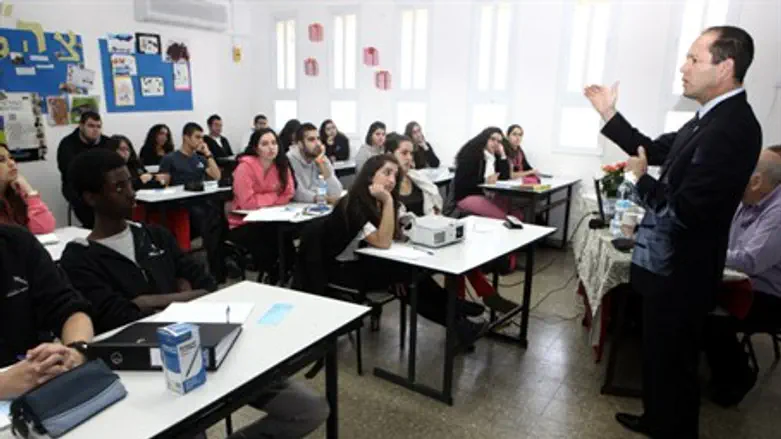
A new study by the Neemanei Torah V’Avoda movement has found that religious Jewish high schools lag significantly behind their counterparts in the secular and Arab sectors when it comes to science studies. Girls in particular are less likely to learn sciences.
The findings do not appear to indicate that extra time spent studying Torah comes at the expense of science, researchers found. Rather, other factors appear to be involved, with one possible issue being the relatively large number of smaller high schools in the community.
It should also be noted that the study pertained to religious public schools, and not to the many semi-private high schools in the religious-Zionist community.
The study revealed that just 2.4 percent of students in the religious Jewish public school system take the Bagrut matriculation exam in chemistry, compared to 8.1% in the public school system and 18.3% in the Arab sector. In religious Jewish public schools, 8.2% of students took the Bagrut test in physics, compared to 9.9% of public school students and 10.9% of students in the Arab sector.
The percent of graduating high school students who passed two Bagrut exams in science was 4.3% among religious public school system graduates, compared to 9.9% among public school students and 16.1% among graduates in the Arab sector.
Science studies suffered among girls in particular: just 1.6% of girls in religious public schools earned a certificate in a science-related subject, compared to 5.5% of girls in the secular public school system, 8.4% of girls in the Arab sector, and 6.1% of boys in religious public schools.
Girls in religious public schools heavily favored the humanities in their Bagrut exams. Researchers said it was not clear whether the trend was due to personal preference or to direction from the school.
They noted that many schools in the religious public school system are relatively small, and that small schools tend to offer fewer science courses due to the high cost of laboratory equipment. Just 53.5% of religious public high schools offer physics courses, compared to 67.9% of public schools and 71.5% of Arab sector schools.
The gap in science learning was particularly large when it came to chemistry: just 15.7% of religious public high schools offer chemistry courses, compared to 51.2% of public schools and 69.1% of Arab sector schools.
Researcher Ariel Finkelstein noted that science education is strong in religious public schools at the elementary and middle school levels. “But we must take care to ensure that the small size of religious public high schools does not pose an obstacle to students in deepening their scientific learning in high school, as well,” he warned.
“We believe that the establishment of new small schools should be avoided, and that existing schools should be united when possible. And parents should be made aware of the implications of sending children to the small schools,” he concluded.